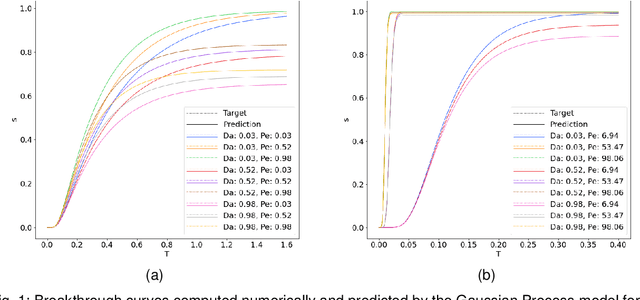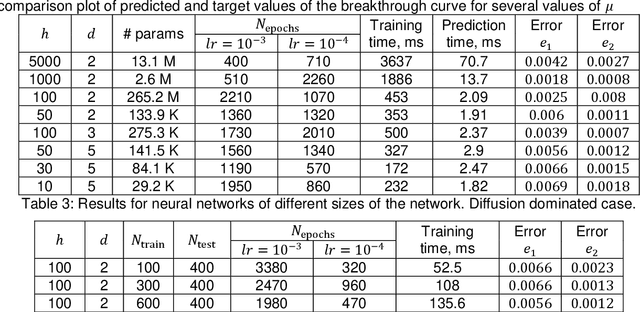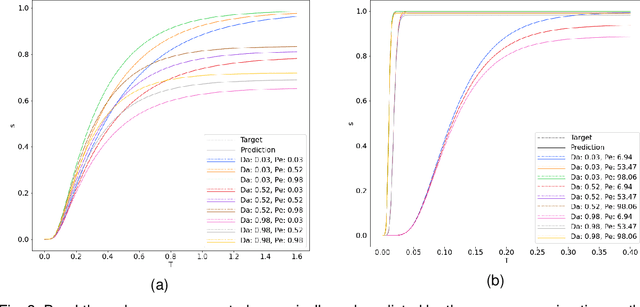Pavel Toktaliev
Fraunhofer ITWM, Technische Universität Kaiserslautern
Machine learning methods for prediction of breakthrough curves in reactive porous media
Jan 12, 2023Abstract:Reactive flows in porous media play an important role in our life and are crucial for many industrial, environmental and biomedical applications. Very often the concentration of the species at the inlet is known, and the so-called breakthrough curves, measured at the outlet, are the quantities which could be measured or computed numerically. The measurements and the simulations could be time-consuming and expensive, and machine learning and Big Data approaches can help to predict breakthrough curves at lower costs. Machine learning (ML) methods, such as Gaussian processes and fully-connected neural networks, and a tensor method, cross approximation, are well suited for predicting breakthrough curves. In this paper, we demonstrate their performance in the case of pore scale reactive flow in catalytic filters.
On the Performance of Machine Learning Methods for Breakthrough Curve Prediction
Apr 25, 2022



Abstract:Reactive flows are important part of numerous technical and environmental processes. Often monitoring the flow and species concentrations within the domain is not possible or is expensive, in contrast, outlet concentration is straightforward to measure. In connection with reactive flows in porous media, the term breakthrough curve is used to denote the time dependency of the outlet concentration with prescribed conditions at the inlet. In this work we apply several machine learning methods to predict breakthrough curves from the given set of parameters. In our case the parameters are the Damk\"ohler and Peclet numbers. We perform a thorough analysis for the one-dimensional case and also provide the results for the three-dimensional case.
 Add to Chrome
Add to Chrome Add to Firefox
Add to Firefox Add to Edge
Add to Edge